Md Taimur Ahad
A comprehensive study on Blood Cancer detection and classification using Convolutional Neural Network
Sep 10, 2024Abstract:Over the years in object detection several efficient Convolutional Neural Networks (CNN) networks, such as DenseNet201, InceptionV3, ResNet152v2, SEresNet152, VGG19, Xception gained significant attention due to their performance. Moreover, CNN paradigms have expanded to transfer learning and ensemble models from original CNN architectures. Research studies suggest that transfer learning and ensemble models are capable of increasing the accuracy of deep learning (DL) models. However, very few studies have conducted comprehensive experiments utilizing these techniques in detecting and localizing blood malignancies. Realizing the gap, this study conducted three experiments; in the first experiment -- six original CNNs were used, in the second experiment -- transfer learning and, in the third experiment a novel ensemble model DIX (DenseNet201, InceptionV3, and Xception) was developed to detect and classify blood cancer. The statistical result suggests that DIX outperformed the original and transfer learning performance, providing an accuracy of 99.12%. However, this study also provides a negative result in the case of transfer learning, as the transfer learning did not increase the accuracy of the original CNNs. Like many other cancers, blood cancer diseases require timely identification for effective treatment plans and increased survival possibilities. The high accuracy in detecting and categorization blood cancer detection using CNN suggests that the CNN model is promising in blood cancer disease detection. This research is significant in the fields of biomedical engineering, computer-aided disease diagnosis, and ML-based disease detection.
A study on Deep Convolutional Neural Networks, Transfer Learning and Ensemble Model for Breast Cancer Detection
Sep 10, 2024Abstract:In deep learning, transfer learning and ensemble models have shown promise in improving computer-aided disease diagnosis. However, applying the transfer learning and ensemble model is still relatively limited. Moreover, the ensemble model's development is ad-hoc, overlooks redundant layers, and suffers from imbalanced datasets and inadequate augmentation. Lastly, significant Deep Convolutional Neural Networks (D-CNNs) have been introduced to detect and classify breast cancer. Still, very few comparative studies were conducted to investigate the accuracy and efficiency of existing CNN architectures. Realising the gaps, this study compares the performance of D-CNN, which includes the original CNN, transfer learning, and an ensemble model, in detecting breast cancer. The comparison study of this paper consists of comparison using six CNN-based deep learning architectures (SE-ResNet152, MobileNetV2, VGG19, ResNet18, InceptionV3, and DenseNet-121), a transfer learning, and an ensemble model on breast cancer detection. Among the comparison of these models, the ensemble model provides the highest detection and classification accuracy of 99.94% for breast cancer detection and classification. However, this study also provides a negative result in the case of transfer learning, as the transfer learning did not increase the accuracy of the original SE-ResNet152, MobileNetV2, VGG19, ResNet18, InceptionV3, and DenseNet-121 model. The high accuracy in detecting and categorising breast cancer detection using CNN suggests that the CNN model is promising in breast cancer disease detection. This research is significant in biomedical engineering, computer-aided disease diagnosis, and ML-based disease detection.
Developing an efficient corpus using Ensemble Data cleaning approach
Jun 02, 2024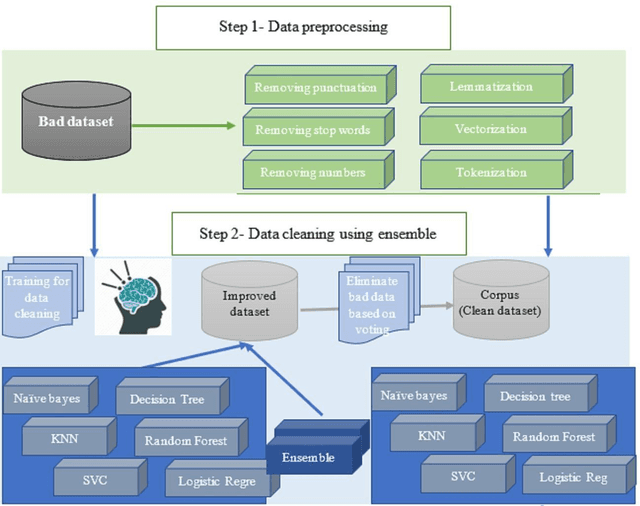
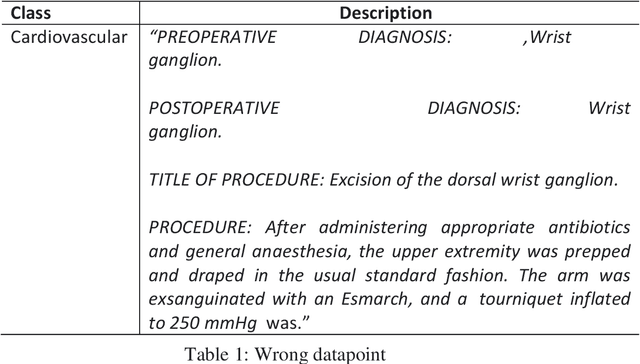
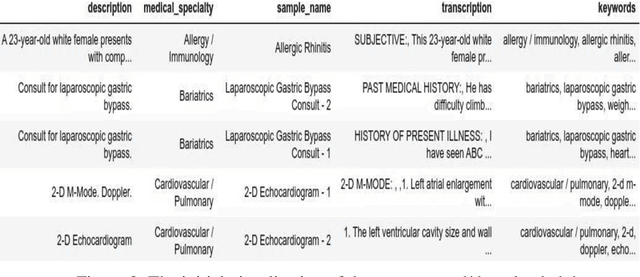

Abstract:Despite the observable benefit of Natural Language Processing (NLP) in processing a large amount of textual medical data within a limited time for information retrieval, a handful of research efforts have been devoted to uncovering novel data-cleaning methods. Data cleaning in NLP is at the centre point for extracting validated information. Another observed limitation in the NLP domain is having limited medical corpora that provide answers to a given medical question. Realising the limitations and challenges from two perspectives, this research aims to clean a medical dataset using ensemble techniques and to develop a corpus. The corpora expect that it will answer the question based on the semantic relationship of corpus sequences. However, the data cleaning method in this research suggests that the ensemble technique provides the highest accuracy (94%) compared to the single process, which includes vectorisation, exploratory data analysis, and feeding the vectorised data. The second aim of having an adequate corpus was realised by extracting answers from the dataset. This research is significant in machine learning, specifically data cleaning and the medical sector, but it also underscores the importance of NLP in the medical field, where accurate and timely information extraction can be a matter of life and death. It establishes text data processing using NLP as a powerful tool for extracting valuable information like image data.
A comprehensive review on Plant Leaf Disease detection using Deep learning
Aug 27, 2023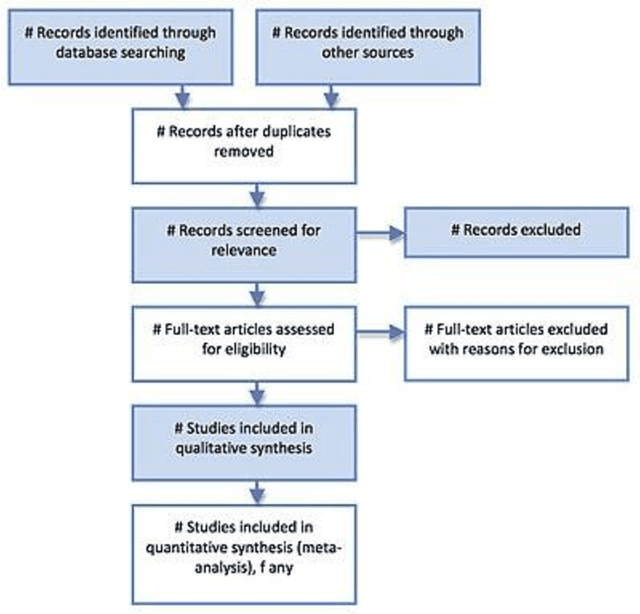
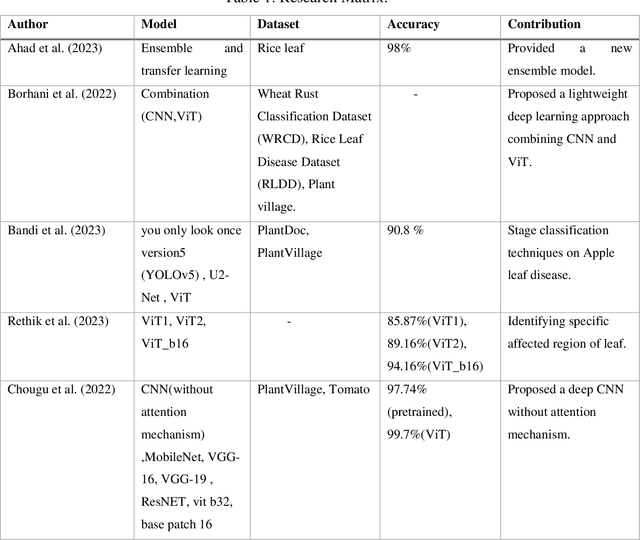
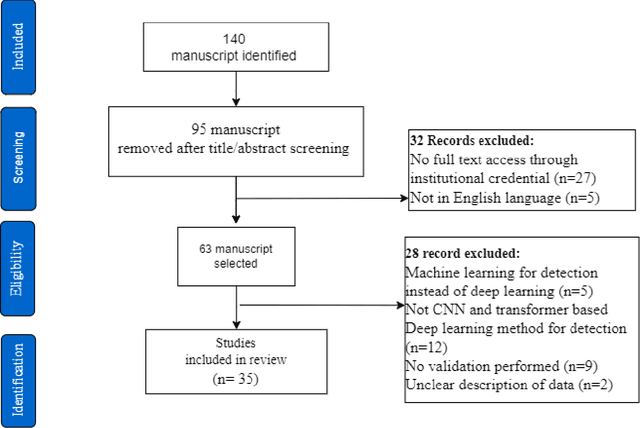
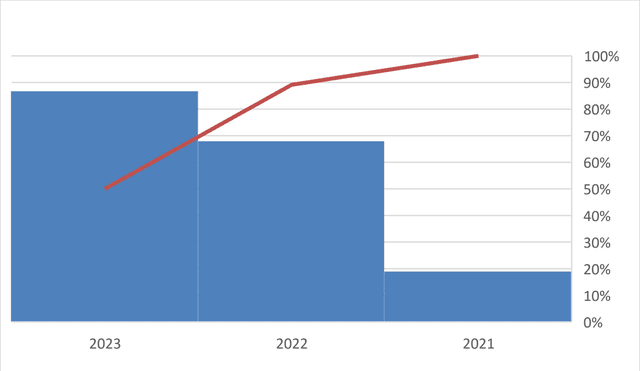
Abstract:Leaf disease is a common fatal disease for plants. Early diagnosis and detection is necessary in order to improve the prognosis of leaf diseases affecting plant. For predicting leaf disease, several automated systems have already been developed using different plant pathology imaging modalities. This paper provides a systematic review of the literature on leaf disease-based models for the diagnosis of various plant leaf diseases via deep learning. The advantages and limitations of different deep learning models including Vision Transformer (ViT), Deep convolutional neural network (DCNN), Convolutional neural network (CNN), Residual Skip Network-based Super-Resolution for Leaf Disease Detection (RSNSR-LDD), Disease Detection Network (DDN), and YOLO (You only look once) are described in this review. The review also shows that the studies related to leaf disease detection applied different deep learning models to a number of publicly available datasets. For comparing the performance of the models, different metrics such as accuracy, precision, recall, etc. were used in the existing studies.
 Add to Chrome
Add to Chrome Add to Firefox
Add to Firefox Add to Edge
Add to Edge